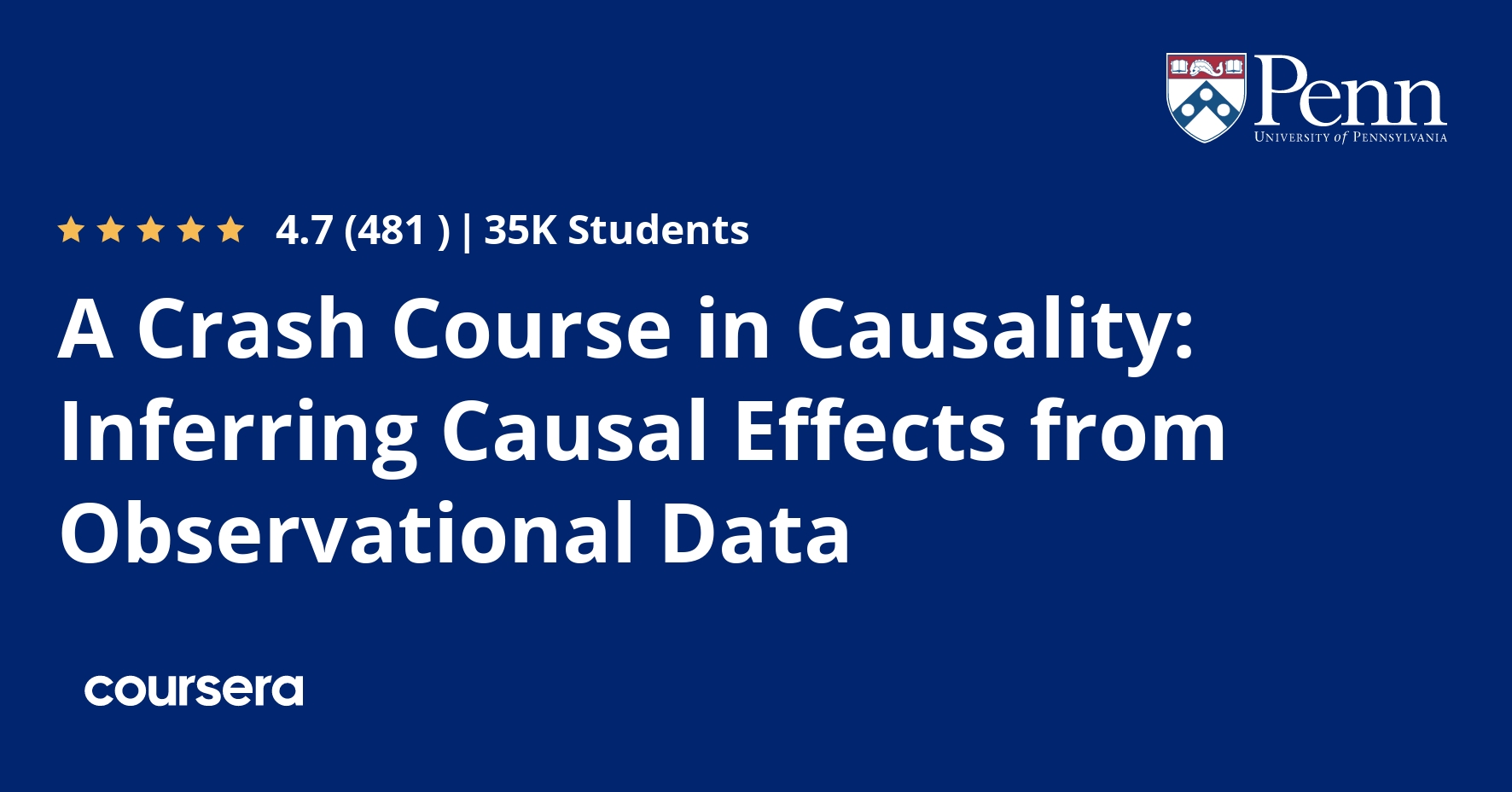Description
We have all heard the phrase “correlation does not equal causation.” What, then, does equal causation? This course aims to answer that question and more!
Over a period of 5 weeks, you will learn how causal effects are defined, what assumptions about your data and models are necessary, and how to implement and interpret some popular statistical methods. Learners will have the opportunity to apply these methods to example data in R (free statistical software environment).
At the end of the course, learners should be able to:
1. Define causal effects using potential outcomes
2. Describe the difference between association and causation
3. Express assumptions with causal graphs
4. Implement several types of causal inference methods (e.g. matching, instrumental variables, inverse probability of treatment weighting)
5. Identify which causal assumptions are necessary for each type of statistical method
So join us…. and discover for yourself why modern statistical methods for estimating causal effects are indispensable in so many fields of study!
What you will learn
Welcome and Introduction to Causal Effects
This module focuses on defining causal effects using potential outcomes. A key distinction is made between setting/manipulating values and conditioning on variables. Key causal identifying assumptions are also introduced.
Confounding and Directed Acyclic Graphs (DAGs)
This module introduces directed acyclic graphs. By understanding various rules about these graphs, learners can identify whether a set of variables is sufficient to control for confounding.
Matching and Propensity Scores
An overview of matching methods for estimating causal effects is presented, including matching directly on confounders and matching on the propensity score. The ideas are illustrated with data analysis examples in R.
Inverse Probability of Treatment Weighting (IPTW)
Inverse probability of treatment weighting, as a method to estimate causal effects, is introduced. The ideas are illustrated with an IPTW data analysis in R.





